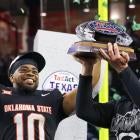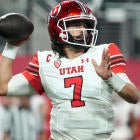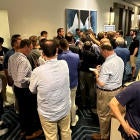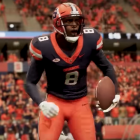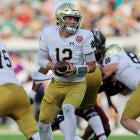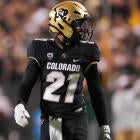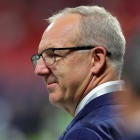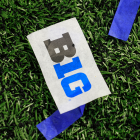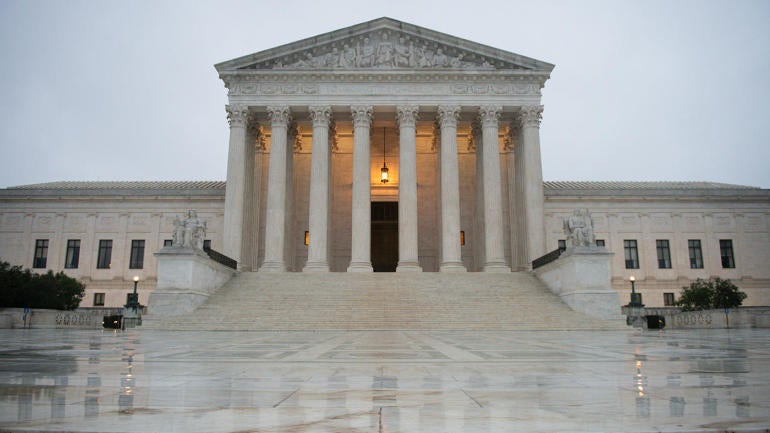
College sports leaders and lawyers are nearing a legal settlement in a landmark antitrust lawsuit that will pave the way for revenue sharing with players as part of the inevitable march toward professionalization in college athletics.
On Tuesday the Big 12 became the first power conference to approve settlement terms, sources told CBS Sports. The ACC followed suit Tuesday evening with the Big Ten approving on Wednesday. The SEC and Pac-12 are expected to follow on Thursday.
"We are optimistic that a transformative moment for college sports may be very close," House plaintiff attorney Jeffrey Kessler told 247Sports.
The long-anticipated resolution of House v. NCAA could come as soon as this week, with college athletics' governing body expected to pay approximately $2.7 billion in back damages over the course of the next decade, according to a memo obtained by multiple media outlets.
Within that total, $1.6 billion would come from reductions in NCAA distributions over the next 10 years -- with roughly 40% from the five power conferences -- according to ESPN. However, there are 68 power-conference schools and nearly 300 Division I programs that fall outside of that category. Division II and Division III schools are not expected to be impacted, but that could change.
The remaining $1.1 billion would be tapped from NCAA reserves and budget cuts, among other sources.
But back damages are only one part of the equation. An expedited timeline for conferences and universities to implement a new pay-for-play model is also on the table. Though booster-led NIL collectives would not be eliminated altogether as part of a new "enforcement infrastructure," they would be subject to guardrails not seen in the current unregulated market, per Yahoo Sports.
The most notable power players swaying in the wind are the athletic directors leading multi-million dollar athletic endeavors. They have prepared for multiple financial scenarios as House v. NCAA faces a potential settlement before a court date in January 2025. But with endless possibilities, there is exasperation.
"At this point in time, there's a real lack of clarity," Baylor athletic director Mack Rhoades told 247Sports. "I don't expect, if there is a settlement, any potential guidelines on how each athletic department distributes those monies. Who receives it? All student-athletes? Just revenue-generating sports? Is everybody the same? My guess is it's not. How do we figure that out?"
The short answer to those questions (and more) is simple: it's up to the lawyers, and potentially the courts, as other lawsuits against the NCAA play out.
Why is a settlement in House v. NCAA likely?
The NCAA and power conferences' legal counsels have been in "deep discussions" with the plaintiff attorneys in recent months to settle the primary lawsuit -- House v. NCAA -- and avoid court. A turning point in those discussions have come within the past month. The settlement will carry a hefty price tag for conferences and individual schools, with plaintiffs seeking more than $1 billion in back-pay to athletes for the four years before the NCAA enacted NIL regulations in 2021.
Why is the NCAA and power conferences eager to settle the suit? Courts typically triple damages favoring plaintiffs, which amounts to more than $4.2 billion if the NCAA loses in court.
What happens if the NCAA rejects the offer?
The adoption of a settlement seems likely, but there's always the chance the NCAA rejects it. That would be far more costly, however. The penalty for the NCAA and power-conference officials could go up roughly sevenfold in the form of $20 billion in back damages -- plus the risk of bankruptcy -- according to documents obtained by Yahoo Sports.
How much will revenue sharing cost schools?
In addition to back pay, schools are preparing their financial books for a new annual line item -- revenue-sharing for players -- that could range from $15 million to $25 million, according to estimates from several athletic directors surveyed by 247Sports. The Collective Association, which represents 35 NIL collectives, presented a revenue-sharing model to the NCAA and the SEC earlier this year that outlines a 20% share of media revenue, which would be distributed by the NIL collectives.
Will there be a salary cap for college programs?
Administrators also expect a salary cap to be attached to the annual revenue shares, similar to professional sports. Though the number is fluid and could fluctuate, it could equal 22% of the average of power-conference schools' media rights, ticket sales and sponsorships, per Yahoo Sports.
Still, it presents another gigantic unknown: are NIL collectives factored into the settlement? If so, that lightens the financial burden on athletic departments. If not, the challenges will only grow as programs with the richest boosters flourish and provide additional pay on top of the players' revenue shares.
"Collectives aren't going to go away if there's a salary cap," said Russell White, president of The Collective Association. "Universities will continue to want to compete above and beyond (the base revenue shares)."
If collectives are not included in the revenue-sharing model, will Congress, which has struggled to push legislation on NIL beyond committee discussions, feel less obligated to adopt legal guidelines?
"We definitely still want standards and rules to bring order to the NIL space," White said.
Title IX implications are not good
Title IX also complicates a potential settlement. The unspoken truth is it seems unlikely administrators and players will advocate for equal pay for athletes whose sports earn less revenue than the cash cows of football and men's basketball.
"It's very likely we're going to see non-revenue sports get massacred," said Jason Belzer, president of Student Athlete NIL. "Title IX is going to be a very big battle. How are you going to stop it? It's going to be tough."
Where players' associations fit in
Meanwhile, several organizations have laid the foundation over the last several years to be the central entity in collective bargaining on behalf of players. Athletes.org made waves this week when it signed the entire UAB football team as members of the players' association.
"You can't do a deal that's going to have any real protection from further litigation without doing it with the athletes sitting at the table, period," said Jim Cavale, founder and chairman of Athletes.org. Cavale strongly believes a revenue-sharing model, along with collective bargaining, will be in place by July 1, 2025, and AO is aggressively pursuing new members.
AO has surpassed 3,000 active members, including nearly 1,500 players from power conferences, Cavale said. He believes AO will "hit critical mass" with over 50% of all athletes in power conferences within the next year. If that happens, it could pave the way for a players association similar in structure to the NFLPA or MLBPA, with major conferences represented by athletes at the negotiation table.
"I still maintain we're in the education business," UCF athletics director Terry Mohajir said. "This national narrative has been hijacked that it's these poor guys and girls are getting taken advantage of. Right now, as it is today, with Alston payments, cost of attendance payments and expenses and housing, our student-athletes live like $100,000 employees in our organization because they have no expenses and they don't pay taxes on any of the extra money they get from Alston payments, academic awards, the cost of attendance and medical expenses."
The National Labor Relations Board is set to hear in two pending cases at USC and Dartmouth that athletes are employees and have the right to form unions. Meanwhile, the NCAA maintains players are not employees, and NCAA president Charlie Baker reinforced that stance in December when he presented a proposal that would allow schools to pay players as much as $30,000 annually for their NIL rights..
"If you convert all of college sports into employment, there is simply no doubt based on math you'll lose an enormous number of student-athlete opportunities across all three divisions because the money is just not there," Baker said. "Most schools lose money on sports, even in DI."
Will Group of Five be spared or skewered?
Revenue sharing and back payments could cripple smaller athletic departments, though the House plaintiff attorneys are not targeting Group of Five conferences in the lawsuit. Most departments are ill-equipped to pay athletes as much as $20 million annually. More than 50% of Group of Five schools earn less than $40 million annually in revenue. The Power Five conferences (then including the Pac-12) combined for more than $3.3 billion in revenue for the 2022 fiscal year, according to federal tax records. Ohio State earned $251.6 million in revenue last year to lead all Power Five schools.
In April, Kessler spoke at Howard University on a panel regarding the future of college athletics.
"You really have to think about [Power Four] as different," Kessler said at the event, per to Yahoo! Sports. "The reason we get tied in knots is because we conflate those schools who have developed these gigantic independent commercial businesses with the schools who are still just educational institutions with extracurricular activities. When you try to come up with one rule for all, you go crazy. You have to look at the schools differently. For the ones with the money, there is plenty of money to compensate the athletes and share it with the women's sports.
"Once you divide it all up, this is not hard. It is only hard if you're saying, 'Well, how will Lehigh be able to afford all this?!' They won't and they won't pay [athletes]. If their concern is that Lehigh then won't be able to compete with Alabama in football ... OK, that's your concern? That's your concern?!"
Hoping for congressional help
Four active antitrust lawsuits threaten the current collegiate athletic models. A settlement in the House case will protect the NCAA and power conferences from lawsuits for the next eight to 10 years, according to Yahoo Sports. The question is whether Congress will provide blanket protection via a new law. NIL proposals in Congress have failed more than one dozen times to advance beyond the pony show of committee hearings.
"You hope that (a settlement) will be the genesis for Congress to step in and put in some additional guardrails," Rhoades said. "It's really hard to navigate if there's revenue share and employee status, and paying whatever that wage is."













